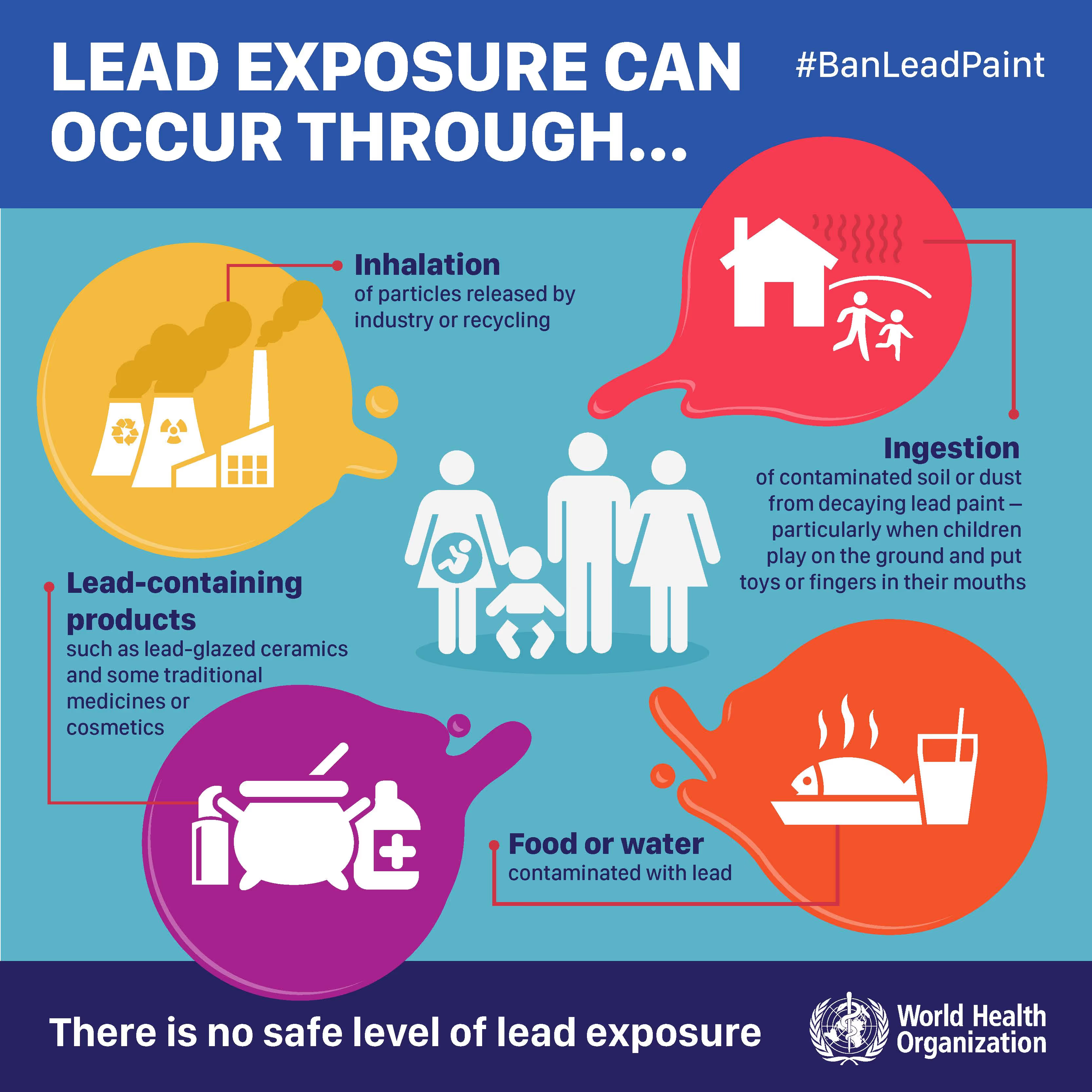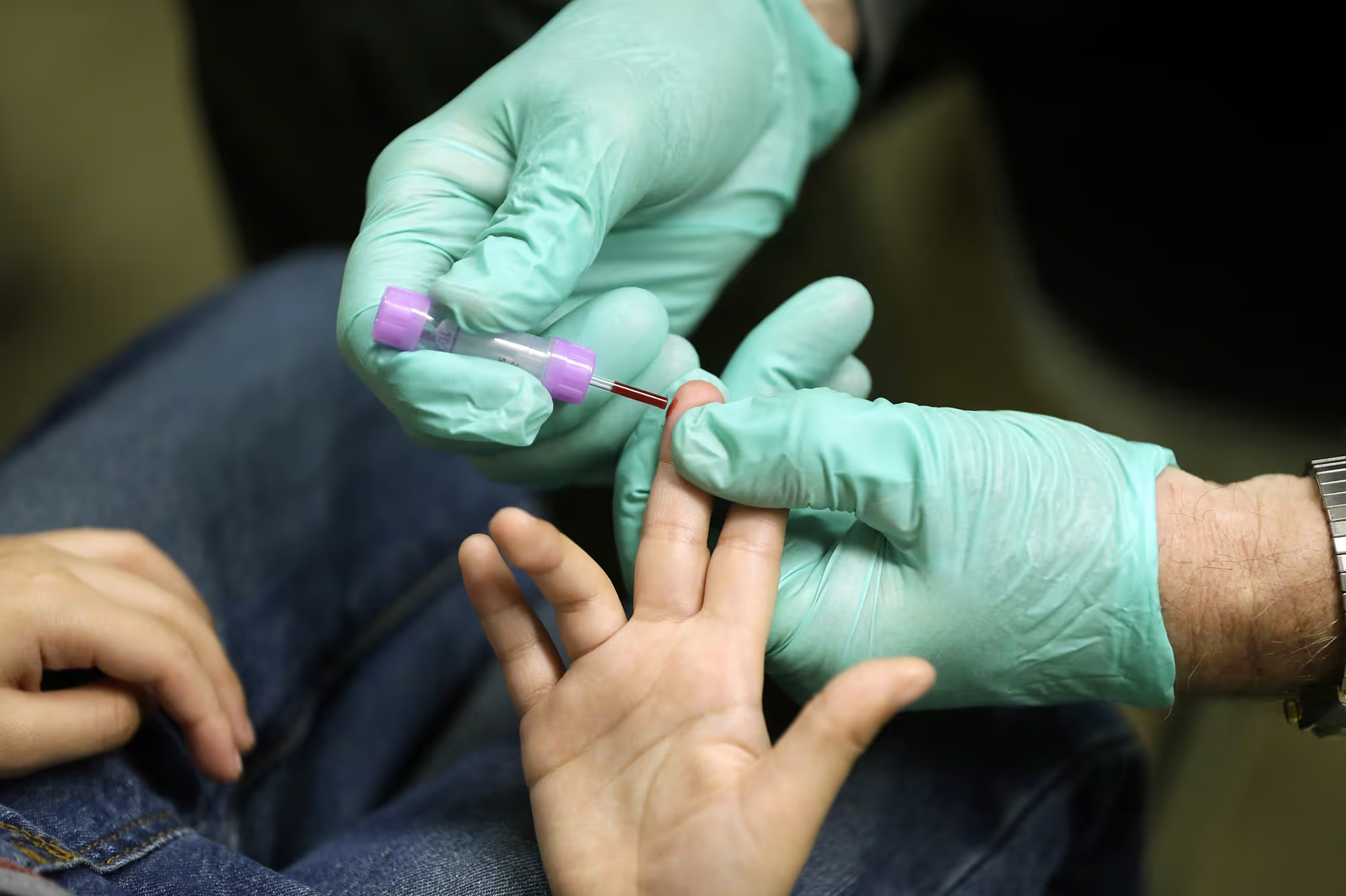Lead Blood test
Lead is a toxic heavy metal. Even at low levels, it can quietly accumulate in your body and affect your brain, heart, kidneys, and bones. Environmental exposure to lead is a major concern for human health, as lead toxicity can occur even at low levels. Most people don’t realise they’ve been exposed until symptoms appear—or worse, irreversible damage has occurred. A lead blood test is the only way to detect your exposure early and act before it’s too late. In this article, we’ll cover everything you need to know about lead exposure testing: what it is, how it works, why it matters, what your results mean, and how to reduce your levels.

Lead Blood Test, Book Lead Screening Test in Australia Today
What:
Blood biomarker
Tests for:
Toxic exposure burden and chronic disease risk
Referral:
Required
Member cost:
$30
What Is Lead?

Lead is a naturally occurring metal found in the earth’s crust, but there’s nothing natural about it being in your body. It has no biological function, and even small amounts can disrupt vital systems. Lead is often found in the environment as various lead compounds, which contribute to its toxicity. The body treats lead like calcium, which means it can sneak into bones, the brain, and organs where it interferes with essential cellular activity.
Historically, lead was used in paint, especially lead paint, petrol, plumbing, and batteries. Lead paint is a major source of past and present exposure, particularly in older homes where it may be peeling or deteriorating. These applications left a legacy of contamination. While many countries, including Australia, have phased out major sources of lead, it still lingers in the environment—and in homes, workplaces, and imported goods.
Common hidden sources of lead include:
- Dust in old homes undergoing renovation (deteriorating lead paint is a common source of lead dust and has been responsible for many lead poisoning cases, especially in older houses)
- Imported ceramics or spices
- Car batteries and e-waste
- Fishing sinkers, bullets, or hobby materials
- Water pipes in older plumbing systems
- Ayurvedic, Chinese, or other unregulated traditional medicines
Unlike some contaminants, lead isn’t excreted efficiently. It builds up over time, particularly in the bones, brain, and kidneys.
Who Is at Risk of Being Exposed to Lead?

Certain groups are more vulnerable to lead and its long-term effects:
- Young children (under 6): Absorb lead more easily. Often ingest dust or paint chips during play.
- Pregnant women: Lead crosses the placenta and can harm foetal development.
- People in older homes: Especially those built before the 1970s, with lead-based paint or old plumbing.
- Workers in high-risk jobs: Construction, battery manufacturing, smelting, and renovation work.
- Those living near industrial sites: Exposure from soil, air, or water.
- People with certain hobbies: Making stained glass, casting sinkers, using lead-based ammo.
- Residents in poorly regulated areas: Inadequate waste systems can increase environmental contamination.
Knowing your risk is the first step to preventing long-term harm.
What Is a Lead Blood Test?
A lead blood test measures how much lead is in your bloodstream, reflecting recent exposure over the past 30–60 days. It’s the standard method for detecting lead poisoning—even at low levels.
The test is useful for:
- Screening people at risk with no symptoms
- Monitoring known exposure
- Assessing workplace or environmental contamination
Types of Blood Lead Tests

Blood lead testing is the most reliable way to determine if you or your child has been exposed to lead. There are two main types of blood lead tests:
- Capillary tests (finger-prick or heel-prick): These involve taking a small drop of blood from the fingertip (for older children and adults) or heel (for infants). Capillary tests are quick and minimally invasive, making them ideal for initial screening, especially in children.
- Venous blood draws: This method involves collecting blood from a vein, usually in the arm. Venous blood draws are considered the gold standard for confirming elevated blood lead levels detected by capillary tests, as they are less likely to be contaminated by lead-containing dust on the skin.
Both types of blood lead tests accurately measure blood lead levels and can be performed at a healthcare provider’s office, clinic, or laboratory. In some regions, blood lead testing is required by law for children at certain ages or for workers in industries with a high risk of occupational exposure to lead. Your healthcare provider will recommend the most appropriate test based on your situation and risk factors.
Why Is Lead Dangerous?
Lead doesn’t just cause acute poisoning. It exerts a low-grade, chronic toxicity that damages nearly every organ system. Because it mimics calcium and other minerals, lead disrupts nerve transmission, enzyme function, mitochondrial energy production, and hormone regulation. In severe cases, lead poisoning can cause irreversible brain damage or even death.
A person's age significantly affects their susceptibility to lead toxicity, with young children and unborn babies being at the highest risk.
Lead’s effects on different body systems:
- Brain: Impairs cognitive function, memory, and focus. Even low levels have been linked to faster cognitive decline in adults.
- Heart: Raises blood pressure by disrupting nitric oxide signalling and increasing oxidative stress.
- Kidneys: Increases the risk of chronic kidney disease by damaging nephrons.
- Bones: Replaces calcium in bone tissue, weakening bone structure and releasing lead back into the bloodstream later in life.
- Reproductive system: Reduces sperm count and motility; may increase miscarriage risk in women.
- Immune system: Impairs both innate and adaptive immunity, leaving the body more vulnerable to infection and inflammation.
The damage is insidious, especially because most people feel fine until symptoms are advanced.
Why Get a Lead Exposure Test?

The only way to know your lead status is to test. You can’t feel a raised blood lead level. It doesn’t cause a fever, rash, or specific symptom until it’s already harming your health.
Many Australians unknowingly live or work in environments with residual lead. Testing is the only way to:
- Identify hidden environmental or occupational exposure
- Catch health risks early, before symptoms emerge
- Understand your toxic load in the context of other biomarkers
- Make informed decisions about detox strategies or lifestyle changes
- Help prevent lead poisoning by identifying exposure before symptoms develop
Most children exposed to lead show no obvious symptoms, so routine testing is essential to detect and address exposure early.
How Is a Blood Lead Test Performed?
A healthcare provider draws a sample of venous blood, usually from your arm. The process takes less than 10 minutes and involves minimal discomfort.
The sample is analysed using methods like Inductively Coupled Plasma Mass Spectrometry (ICP-MS) or Graphite Furnace Atomic Absorption Spectroscopy (GFAAS), which can detect even trace levels with high precision.
What Affects Lead Levels in the Body?
Your blood lead level is influenced by several factors beyond exposure. Environmental exposure, such as living near industrial sites or in contaminated areas, is a major factor influencing blood lead levels.
1. Absorption Efficiency
Only a small percentage of ingested or inhaled lead is absorbed, but this rate increases with nutritional deficiencies (like low iron or calcium) and in children, whose bodies are more efficient at absorbing environmental toxins.
If you are concerned about your child's risk of lead exposure, consult your child's healthcare provider for assessment and possible testing.
2. Lead Storage and Mobilisation
Lead is stored long-term in bones and teeth. It can be remobilised into the blood during times of stress, illness, pregnancy, or bone turnover (e.g. osteoporosis).
3. Gut Integrity
A healthy gut acts as a barrier to toxins. Leaky gut or dysbiosis may allow more lead into circulation.
4. Detoxification Pathways
Some people have reduced capacity to detoxify and excrete lead due to genetic polymorphisms in enzymes like GST or MTHFR. These individuals may retain lead more readily.
5. Environmental Triggers
Hot water from old pipes, dust from renovations, or the use of imported cosmetics can cause sudden spikes in blood lead levels.
What Is a Normal Blood Lead Level?

Health agencies now agree: there is no safe level of lead in the body. The CDC and WHO both stress that any detectable amount could be harmful, especially with chronic exposure. A blood lead level greater than 3.52 µmol/L is considered elevated and warrants investigation, particularly in communities with known industrial exposure.
How to Prepare for a Lead Screening Test
Though no special preparation is required, you can optimise accuracy:
- Avoid high-calcium or iron supplements 24 hours before the test
- Inform your provider of recent renovations, travel, or new products used
- Stay hydrated to support a smoother blood draw
Risks and Limitations of Lead Testing
- Only reflects recent exposure (1–2 months)
- Doesn’t show long-term body burden stored in bone
- It can vary if the sample is mishandled
- Doesn’t assess other heavy metals unless specifically tested
Organisations such as the Medical Research Council have reviewed these limitations of blood lead testing and emphasise the importance of comprehensive assessment.
How Lead Exposure Affects Long-Term Health
Even mild exposure can have long-term impacts, especially when combined with other risks like inflammation, poor diet, or low fitness.
Long-term risks include:
- Hypertension and cardiovascular disease
- Cognitive decline and neurodegeneration
- Osteoporosis and fracture risk
- Insulin resistance and metabolic dysfunction
- Fatigue and reduced mitochondrial function
Lead doesn’t work in isolation. It contributes to the total load your body must manage—and that’s why it’s critical to detect early.
How to Reduce Your Blood Lead Levels
1. Identify and remove the source
Have your home or water tested. Stop using imported products or traditional remedies that may be contaminated.
2. Optimise mineral intake
Calcium, iron, magnesium, and zinc reduce lead absorption in the gut. Get these through food or supplements.
3. Support liver detox
Glutathione, B vitamins, and amino acids like glycine help your liver process and eliminate toxins more effectively.
4. Improve gut function
A healthy gut barrier reduces the amount of lead absorbed. Probiotics, prebiotics, and fibre help maintain this integrity.
5. Use gentle binders (if advised)
Substances like activated charcoal, modified citrus pectin, or chlorella may help bind lead in the gut. Only use under clinical guidance.
Sources
1. WHO - Lead Poisoning
https://www.who.int/news-room/fact-sheets/detail/lead-poisoning-and-health
2. Department of Health Victoria - Lead and human health
https://www.health.vic.gov.au/environmental-health/lead-and-human-health
3. NHMRC - Evidence on the effects of lead on human health
https://www.nhmrc.gov.au/about-us/publications/evidence-effects-lead-human-health
4. AIHW - Lead in Australian Children
Get On Top Of Your Lead Levels
Lead is toxic, cumulative, and easy to miss without testing. You won’t know it’s there until it’s already affecting your brain, blood pressure, or energy. A simple blood lead test gives clarity, control, and peace of mind. At Everlab, we don’t just tell you the number, we give you the plan.
.avif)